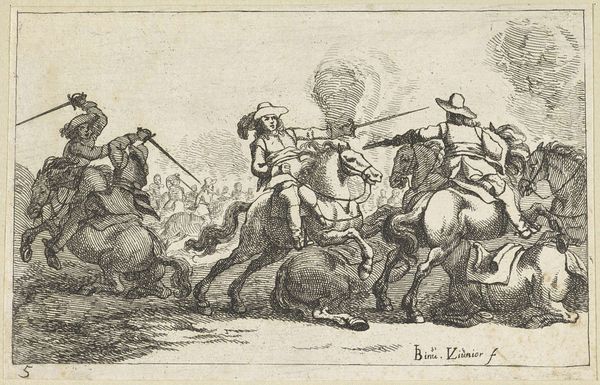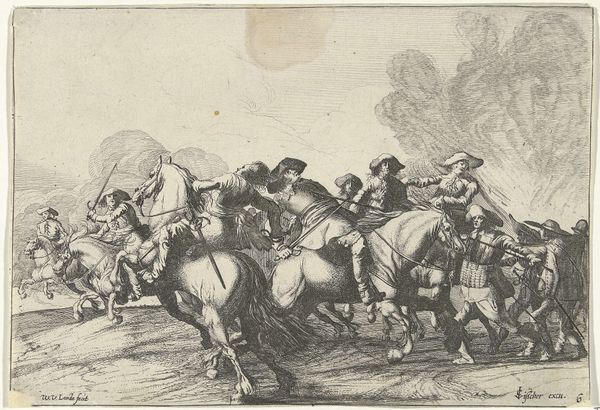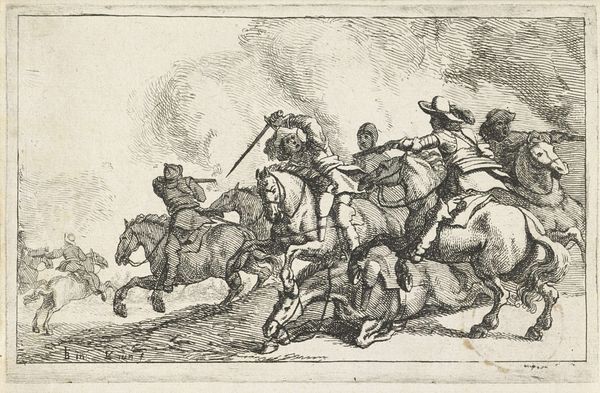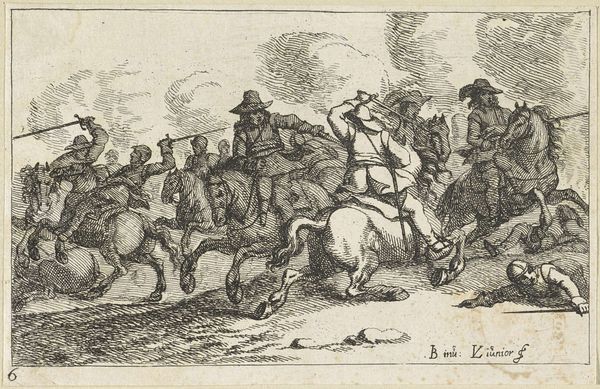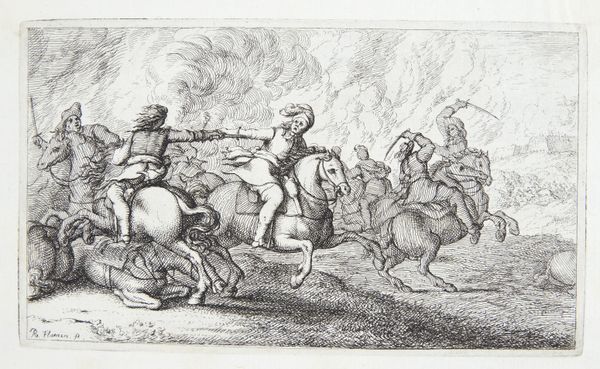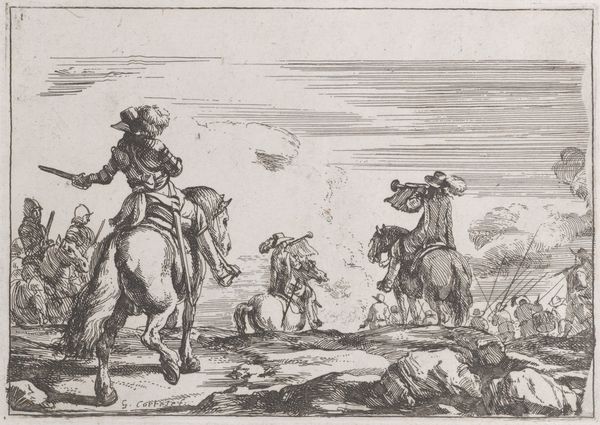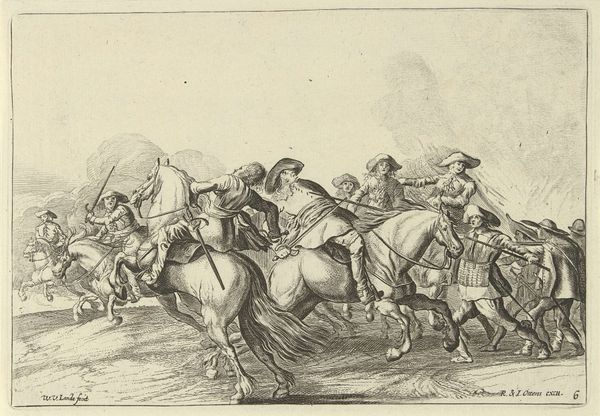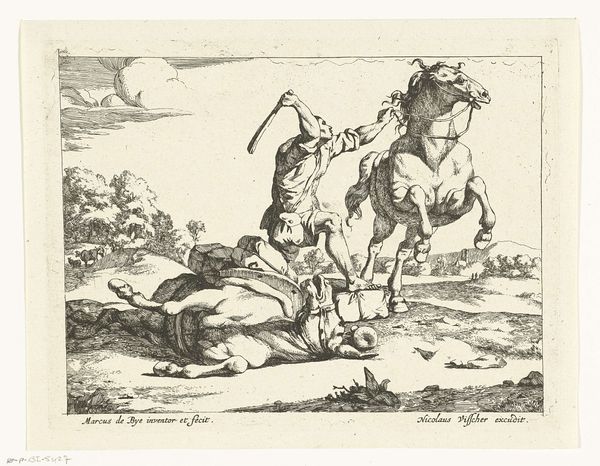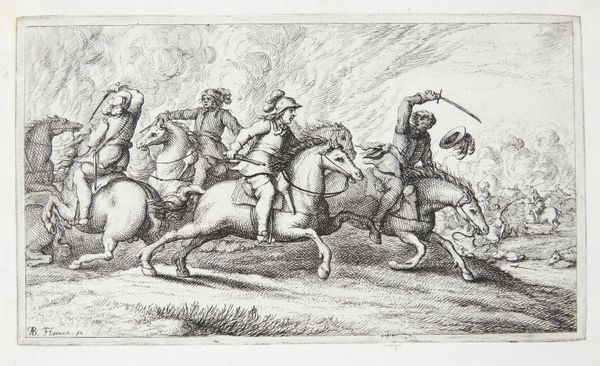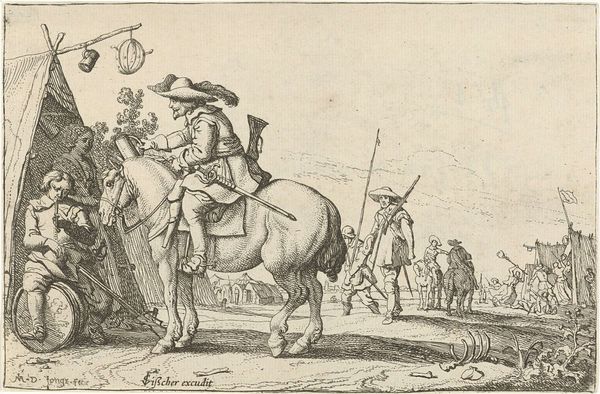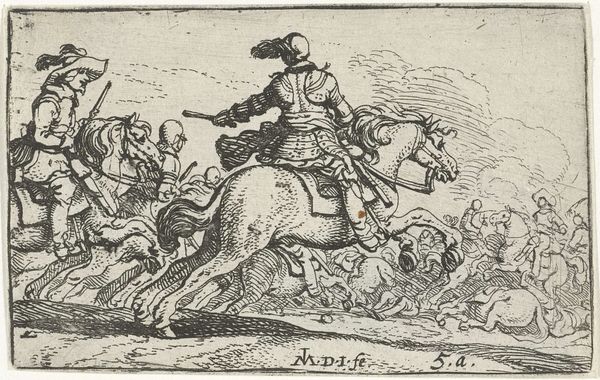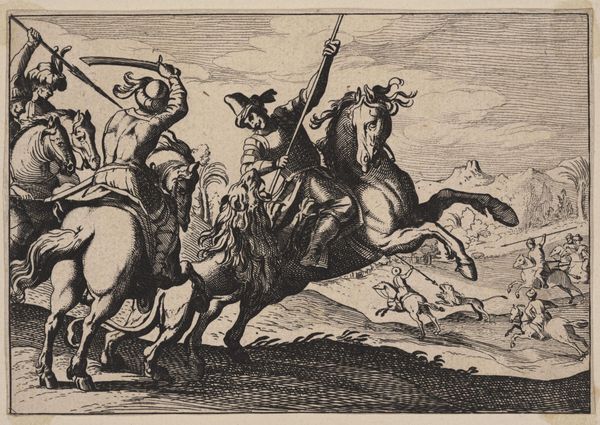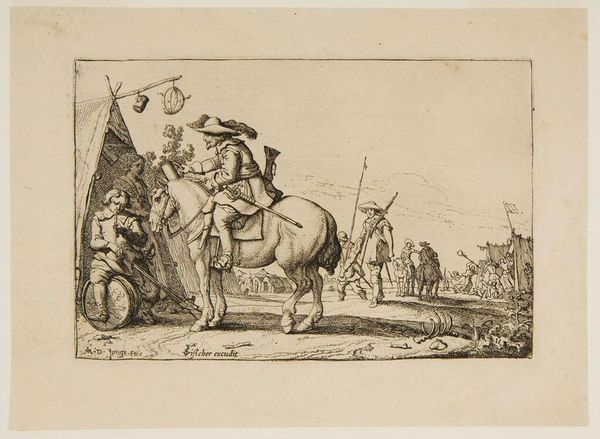
print, engraving
#
baroque
# print
#
landscape
#
figuration
#
line
#
history-painting
#
engraving
Dimensions: height 102 mm, width 157 mm
Copyright: Rijks Museum: Open Domain
Curator: Lucas Vorsterman II's engraving, "Ruiter met zwaard valt gevallen ruiter aan," created between 1651 and 1652, is quite intense, wouldn't you agree? Editor: Chaotic comes to mind. A swirl of lines portraying frantic movement. I immediately notice the vulnerable fallen rider and the aggression of the attacker towering over him. It has an almost dizzying energy. Curator: Exactly! Vorsterman's choice of engraving is significant here. Think about the labor involved—meticulously carving those lines into a metal plate, each one representing a conscious decision to depict the chaos of battle. The social context of the 17th century is impossible to ignore; it’s a period of rampant warfare and conflict in Europe. Editor: Yes, that repetitive mark-making to produce multiple prints makes me think about production and the economics of art at the time. Each line physically made the same way to make a statement about…well, I see brutal conflict! What really grabs me is the dynamism—the diagonals, the swirling composition. It gives a feeling of relentless motion that’s…arresting, no pun intended! It has to also depict, in a general way, history. Curator: Absolutely, a slice of history distilled down to its most raw, confrontational moment. There is even landscape incorporated into this figuration with trees. In these lines is contained humanity and its folly—its seemingly endless cycle of violence. A story being told in a universal visual language we know even today, even on the other side of the world. Editor: Well, maybe, the use of black and white gives a kind of dramatic clarity, maybe to make it as accessible as possible. It really accentuates that raw drama you spoke about! No one looks calm, and no surface, whether horse flank or jacket sleeve, is still! Looking at the physicality of production and reception, and with access to prints, more people could own this, think about it, disseminate its statement about society, and carry forward its legacy into ours. Curator: Precisely, it carries into our own. That capacity of an artwork to endure as an object—and to be "readable," however disquieting the scene is. Editor: I come away really feeling like those lines are almost acting as instruments of power in themselves. Every careful movement cuts into both plate and our modern mind’s eye.
Comments
No comments
Be the first to comment and join the conversation on the ultimate creative platform.
